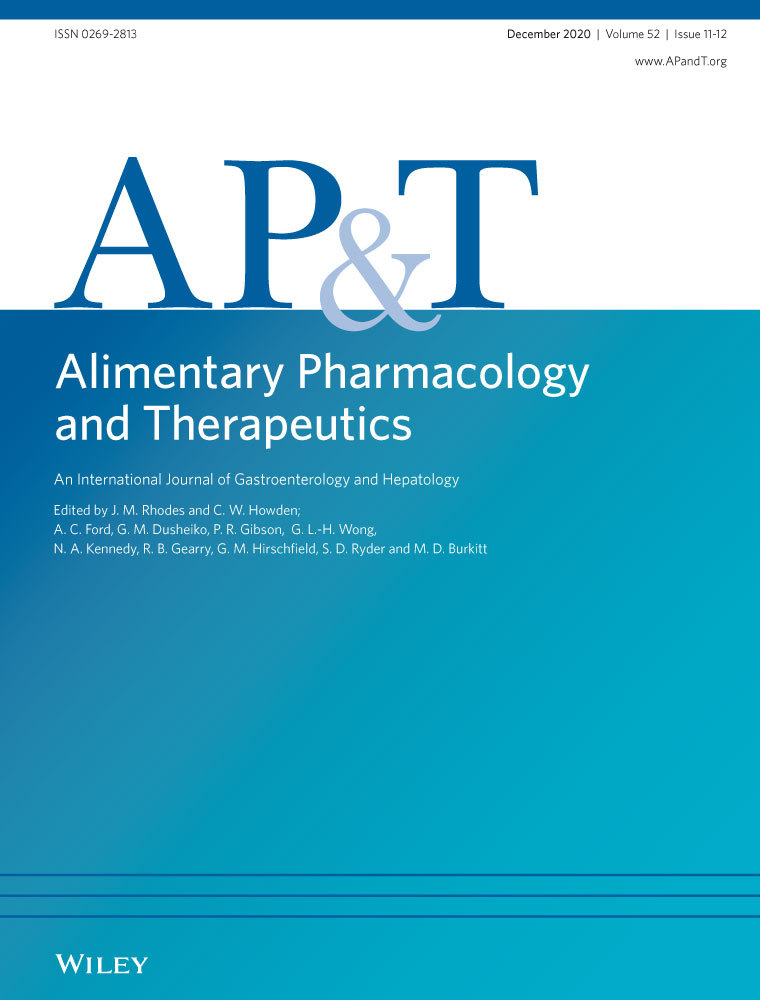Letter: female patients with hepatocellular carcinoma may have better prognosis than male patients
Abstract
LINKED CONTENT
This article is linked to Rich et al paper. To view these article, visit https://doi.org/10.1111/apt.15917
Sex disparity in presentation of patients with hepatocellular carcinoma (HCC) has been well recognised in recent decades. However, the prognosis between sex disparity has been controversial. Rich et al1 retrospectively analysed 1110 patients with HCC at two US health systems. The proportion of male and female patients was 77% and 23%, which is similar to other studies.2-6 Moreover, female patients were older at diagnosis, which is also similar to previous studies.2-6 However, regarding prognosis, the results of Rich et al1 were only supported by two studies,2, 3 but not others.4-6 For example, one study from Asia found no significant sex differences in terms of intrahepatic recurrence-free survival, distant metastasis-free survival and overall survival (OS).4
To determine the proportion, median age and prognosis of male and female patients with HCC, we systematically searched PubMed for studies investigating sex disparity in presentation and prognosis. Hazard ratios (HRs) and 95% confidence intervals (95% CIs) for overall survival were calculated.
Ten studies involving 51 506 patients with HCC from seven countries or regions were included in the analysis (Table 1).1-10 Men were disproportionately affected compared to women 2.2- to 6.7-fold. All studies reported that female patients were older at diagnosis. Six reported that female patients had significantly higher OS than male patients.1-3, 8-10 However, the other four studies found similar OS.4-7 We calculated pooled HRs and 95% CIs based on the six studies reporting these values.1-4, 6, 7 The pooled HR (95% CI) was 0.90 (0.81-1.01; P = 0.07).
| Study | Country/region or database | Total sample size | Primary treatment modality | Proportion (M/F, %) | Median age (M/F, yrs)a | Hazard ratio (95%CI) or P value for OSb |
|---|---|---|---|---|---|---|
| Rich1 | America | 1110 | More than two | 77/23 | 59.2/62.5 | 0.81 (95% CI, 0.68-0.97) |
| Yang2 | SEER database | 39 345 | More than two | 76/24 | 61/67 | 0.83 (95% CI, 0.77-0.88) |
| Farinati3 | Italy | 1834 | More than two | 74/26 | Female patients were older age at diagnosisc | 0.84 (95% CI, 0.72-0.99) |
| Lai4 | Taiwan | 516 | Hepatic resection | 77/23 | 56.2/57.7 | 0.88 (95%CI, 0.51-1.51) |
| Wu5 | America | 1206 | More than two | 75/25 | 61.6/66.0 | P = 0.69 |
| Ladenheim6 | America | 1886 | More than two | 77/23 | 59.9/64.0 | 1.01 (0.82-1.24) |
| Zhang7 | China | 1435 | Hepatic resection | 86/14 | 51.6/52.1 | 1.15 (95% CI, 0.95-1.45) |
| Dohmen8 | Japan | 704 | More than two | 69/31 | 64.2/68.2 | P = 0.0167 |
| Lam9 | Hong Kong | 3171 | More than two | 84/16 | 56.5/60.8 | (95%CI, 0.57-0.98), P P = 0.034 |
| Tangkijvanich10 | Thailand | 299 | More than two | 87/13 | 52.6/56.4 | P = 0.004 |
- Abbreviations: F, female; M, male; OS, overall survival.
- a The hazard ratio for the overall survival of female vs male.
- b Age at HCC diagnosis.
- c The median age was not reported in detail.
Therefore, our results confirm those of Rich and coworkers.
ACKNOWLEDGEMENT
Declaration of personal interests: None.
Open Research
DATA AVAILABILITY STATEMENT
The data that support the findings of this study are available from the corresponding author upon reasonable request.




